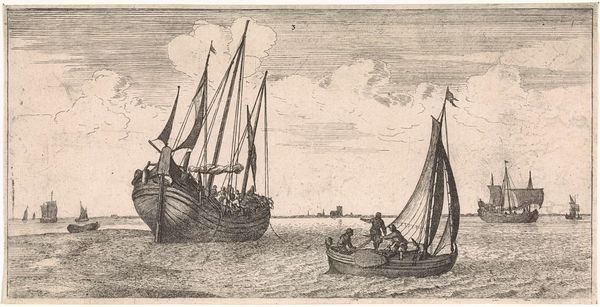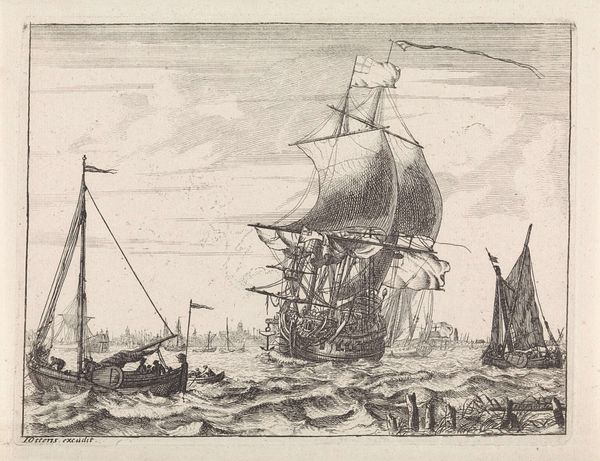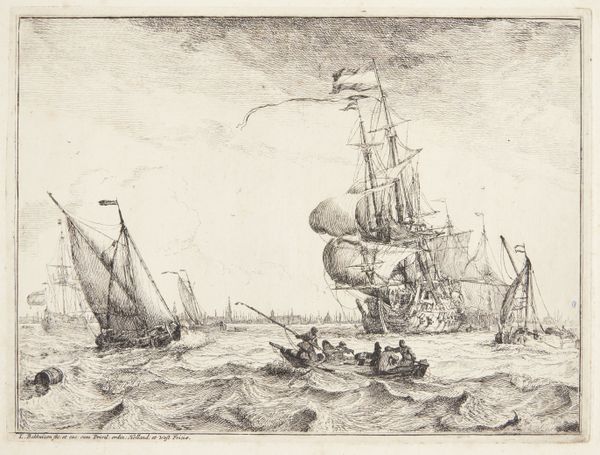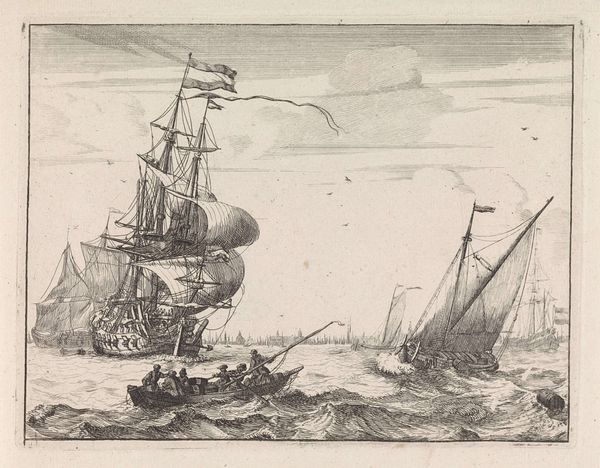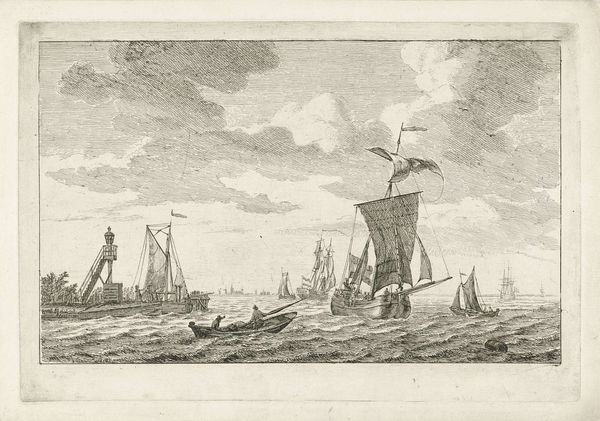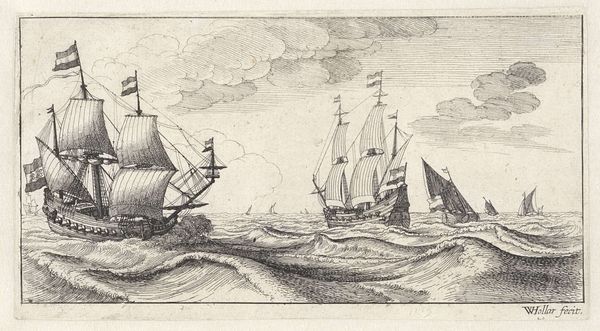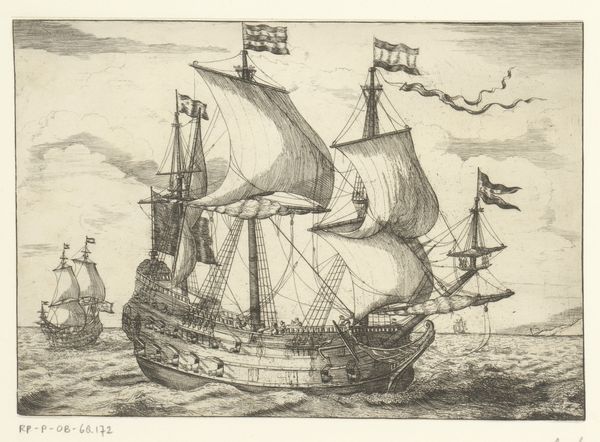
print, engraving
#
baroque
#
dutch-golden-age
# print
#
landscape
#
engraving
#
sea
Dimensions: height 147 mm, width 292 mm
Copyright: Rijks Museum: Open Domain
Joost van Geel created this print of ships at sea sometime in the 17th century using etching, a printmaking technique dependent on the corrosive properties of acid. Van Geel would have coated a metal plate with a waxy, acid-resistant substance, then scratched away his design to expose the metal beneath. The plate was then submerged in acid, which bit into the exposed lines, creating grooves. The deeper and more numerous the lines, the more ink the plate would hold. The plate was then inked, wiped clean, and pressed against a sheet of paper. The resulting print shows us the ships that were central to the Dutch economy and political power in the 17th century. What is remarkable about the etching is the labor it implies, both in the making of the image and in the shipbuilding depicted. Van Geel's meticulous lines, wrought by hand, capture the very ships that were built by hand, with each line testament to the relationship between labor, craft and economy.
Comments
No comments
Be the first to comment and join the conversation on the ultimate creative platform.



